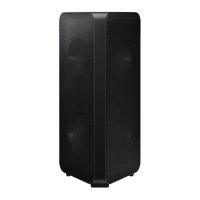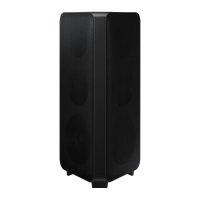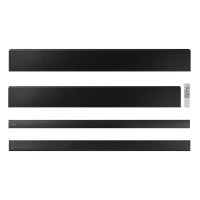Why Does My Speaker Sound Fine at Low Volume but Distort at High Volume?
There’s nothing more frustrating than hearing your speaker sound crystal clear at low volumes, only for the sound to turn distorted and garbled when you crank up the volume. If you've ever experienced this, you’re not alone. It’s a common issue that can be caused by several factors. Let’s take a closer look at why this happens and how you can fix it.
1. Why Does Speaker Distortion Happen at High Volume?
When you increase the volume on your speaker, the speaker drivers (the parts responsible for producing sound) are pushed to work harder. At higher volumes, if any of the components are underperforming or the system isn’t designed to handle those levels, distortion occurs. Here's why:
1.1. Overdriving the Speaker Drivers
Speaker drivers are designed to handle a specific amount of power. When you turn the volume up too high, the drivers are pushed beyond their limits. This causes them to produce distorted sound or even rattle, which you might hear as a buzzing or crackling sound.
1.2. Clipping in the Amplifier
If your speaker is paired with an external amplifier, the problem could be caused by clipping. Clipping occurs when the amplifier tries to deliver more power than it can handle, resulting in a distorted, harsh sound. The amplifier literally "clips" the sound wave, creating a flat-top waveform that’s not true to the original audio.
Clipping is a common culprit when your speaker sounds fine at lower volumes but distorts when the volume is turned up.
1.3. Insufficient Power Handling
Speakers have a power rating that indicates how much power they can handle without distortion or damage. If your amplifier or audio source delivers more power than the speaker can handle, you will experience distortion. This is especially noticeable when the volume is cranked up, as the power demand increases.
2. What Are the Common Causes of Distortion at High Volume?
2.1. Poor Quality or Cheap Speakers
Lower-quality speakers or budget speakers are often not built to handle high volumes without distorting. They may have smaller drivers, cheaper materials, or less effective internal components that can't reproduce sound accurately at higher power levels.
2.2. Low-Quality Audio Source
If the audio file or streaming source itself is of poor quality or highly compressed, it can cause distortion when amplified. Low-bitrate files or streaming services that compress audio too much may sound fine at low volumes but become noticeably distorted when turned up.
2.3. Incorrect Speaker Impedance Matching
Impedance is a measure of resistance to electrical current. If your speaker’s impedance rating doesn’t match that of your amplifier or audio source, distortion can occur, especially at high volumes. Mismatched impedance can cause the amplifier to overwork, leading to distortion.
2.4. Acoustic Issues
Sometimes, distortion at high volumes is not due to the speaker or amplifier itself but the room acoustics. If your room has poor acoustics, with too much echo or sound reflection, you might hear distortion even if the speaker is functioning well. At higher volumes, sound waves interact more with the room, exacerbating distortion.
3. How to Fix Speaker Distortion at High Volume
Luckily, there are several things you can do to prevent distortion at higher volumes:
3.1. Avoid Overdriving the Speaker
Ensure that the volume on both the speaker and the source device (like your phone, computer, or amp) are not set too high. Gradually increase the volume and stop before you hear distortion. This will keep the drivers from being overworked.
3.2. Use an Amplifier with Proper Power Output
If you’re using an external amplifier, make sure its power output matches your speaker’s power rating. If you have a high-power amplifier but a low-power speaker, it’s likely to cause distortion. Aim for a good match between your amp and speaker's power handling capacity.
3.3. Upgrade Your Speakers
If you frequently listen at high volumes, consider upgrading to higher-quality speakers that are designed to handle larger volumes without distortion. Floor-standing speakers or high-end bookshelf speakers are often built to produce cleaner sound at higher power levels.
3.4. Check for Clipping
If you're using an external amplifier, check for clipping and make sure you’re not overdriving the amplifier. If clipping is happening, reduce the volume on the amplifier, and use the volume control on your audio source instead.
3.5. Match the Impedance
Ensure proper impedance matching between your speakers and amplifier. Most consumer speakers have an impedance of 4 to 8 ohms, but it’s crucial that the amplifier or receiver you use is compatible. Double-check the specifications for both to avoid distortion.
3.6. Use a High-Quality Audio Source
For streaming services, choose higher-quality settings or lossless formats. If you're playing music from files, make sure they are of high bitrate and uncompressed to ensure the sound quality is preserved at higher volumes.
3.7. Consider Room Acoustics
Try to adjust the positioning of your speakers. Avoid corners or walls that may amplify bass frequencies or cause standing waves. You can also add acoustic treatments like foam panels or bass traps to improve sound quality and reduce unwanted distortions caused by room acoustics.
4. Final Thoughts
Distortion at high volumes is a common issue, and the causes can range from overdriving the speakers to low-quality components or poor acoustics. By following the tips mentioned above, you can significantly reduce or even eliminate the distortion you experience when turning up the volume.
Remember, every speaker has its limits, and pushing them beyond those limits will always result in some form of distortion. If you love to listen at high volumes, investing in higher-quality gear and making the necessary adjustments will improve your overall sound experience.



